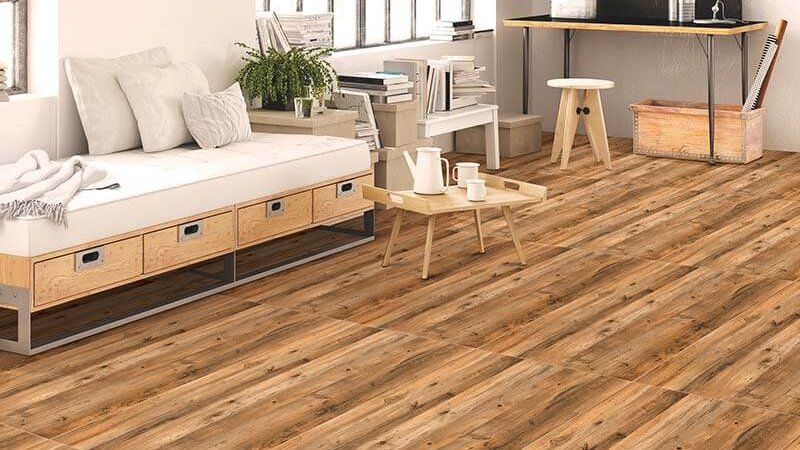Wood Floor Tiles: Timeless Beauty or Eco-Faux Pas?

The allure of wood floor tiles is undeniable. They offer the warmth and character of natural wood, combined with the durability and ease of maintenance of ceramic tiles. But in today’s eco-conscious world, are wood floor tiles still a responsible choice?
The Rise and Fall (and Potential Rise?) of Wood Floor Tiles
Wood floor tiles, also known as wooden floor tiles, enjoyed immense popularity in the 1990s and earlier. Their realistic wood grain patterns and classic charm made them a versatile choice for homes and businesses alike. However, concerns about deforestation and the environmental impact of wood production have led many to reconsider their use.
But before we completely write them off, let’s take a balanced look at wood floor tiles:
The Downsides:
- Environmental impact: Traditional wood floor tiles are typically made from real wood, which contributes to deforestation, especially if sourced unsustainably.
- Cost: Genuine wood floor tiles can be significantly more expensive than other tile options, making them less budget-friendly.
The Upsides:
- Durability: When properly cared for, wood floor tiles can last for decades, offering excellent value in the long run.
- Versatility: They come in a wide variety of wood species, finishes, and textures, allowing for diverse design possibilities.
- Warmth and character: Unlike some ceramic tiles, wood floor tiles add a touch of natural warmth and character to any space.
So, are wood floor tiles good for flooring?
It depends. If sustainability is your top priority, alternative materials like sustainably sourced bamboo or porcelain tiles with realistic wood designs might be better choices. However, if durability, classic aesthetics, and long-term value are important, and you can source wood floor tiles from ethical and sustainable sources, they can still be a viable option.
Are wood floor tiles cheaper than tile?
Generally, no. Wood floor tiles tend to be more expensive than standard ceramic or porcelain tiles. However, the cost can vary depending on the type of wood, size, and brand. It’s crucial to compare prices and consider the longevity and maintenance costs before making a decision.
How do you maintain wooden floor tiles?
Proper care is essential for maximizing the lifespan and beauty of wood floor tiles. Here are some key tips:
- Regular cleaning: Sweep or vacuum frequently to remove dust and debris. Use a wood floor cleaner specifically designed for your tile type.
- Moisture control: Avoid excessive moisture exposure, as it can warp or damage the wood. Clean up spills promptly and maintain proper ventilation.
- Protective measures: Use area rugs in high-traffic areas and consider furniture protectors to prevent scratches and dents.
Alternatives to Wood Floor Tiles:
If you love the look of wood but prefer a more eco-friendly option, consider:
- Porcelain or ceramic tiles with wood-look designs: These offer realistic wood visuals with the durability and low maintenance of ceramic tiles.
- Engineered wood flooring: This option uses a core of recycled wood fibers, making it a more sustainable choice than solid wood tiles.
- Bamboo flooring: Bamboo is a fast-growing, renewable resource that offers a natural wood look with good durability.
Ultimately, the decision of whether or not wood floor tiles are right for you depends on your priorities, budget, and values. By carefully weighing the pros and cons and considering sustainable alternatives, you can make an informed choice that aligns with your needs and environmental concerns.
Remember:
- South Africa offers a variety of wood floor tile options, from local sustainable sources to imported brands. Research thoroughly to find reputable suppliers with ethical practices.
- Explore wood flooring options beyond tiles, such as engineered wood or bamboo, for potential eco-friendly alternatives.
I hope this information helps you make an informed decision about wood floor tiles!

